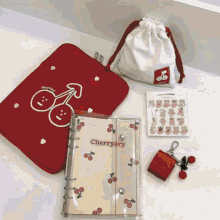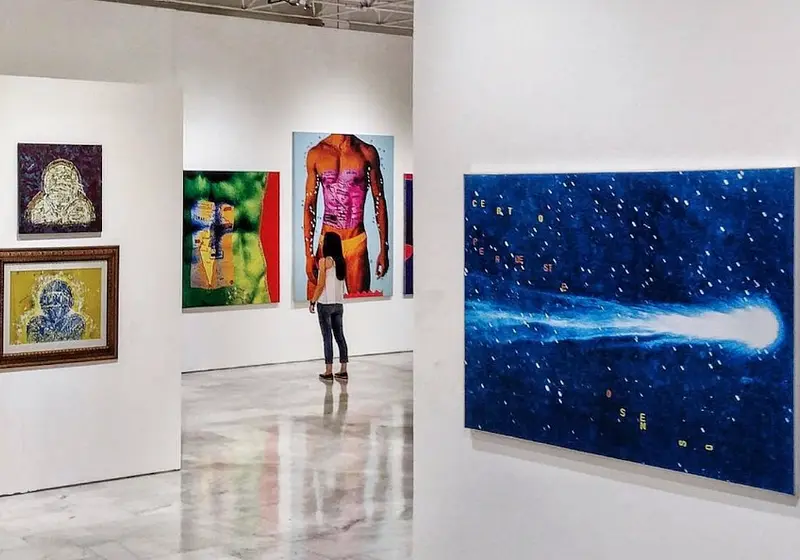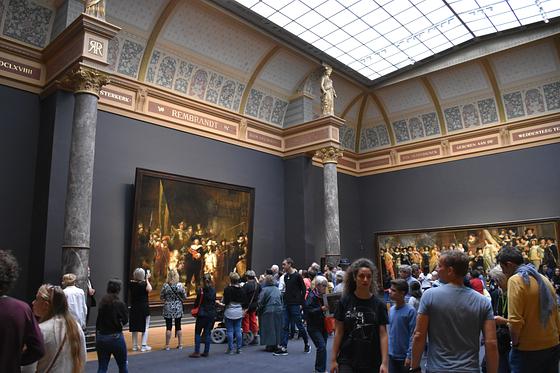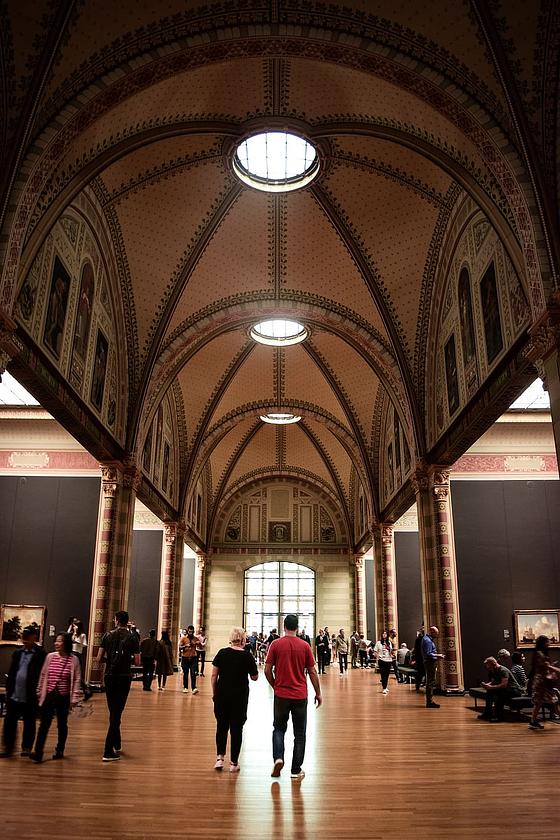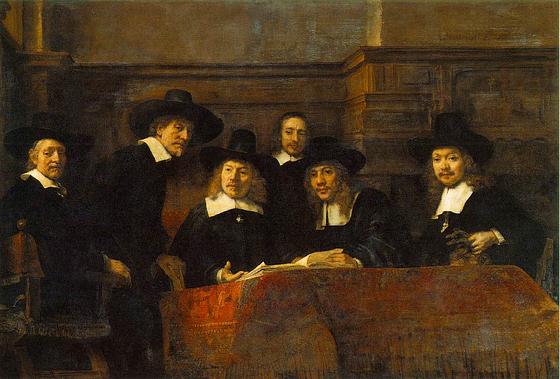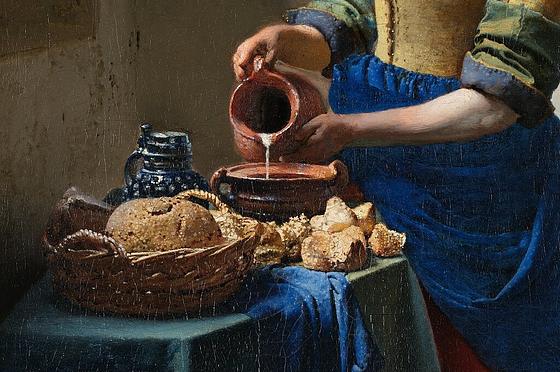I don’t recall ever seeing a more beautiful portrait of a cow than in the Rijksmuseum of Amsterdam. Lavish colors and loose brushstrokes adorned with golden light, the animal crept pastorally out of the canvas and spoke to me directly: “you didn’t charge your phone.” Against all odds, I must admit it’s true - moving to the metropolis, I wasn't totally ready for the hurdles that would come my way. The wonders of the power bank, for instance, are an unknown, possibly legendary story I will spend my adulthood deciphering.
Main Hall of the Rijskmuseum, courtesy of Vasyatka1 under CC Attribution-Share Alike 4.0 License.
Museums are a sacred space for the out of place, the non-believers and those seeking a one-way ticket out of themselves, especially the ones that overwhelm the senses with history so palpable and dense, they are shipwrecked like titans by turbulent brainwaves, going down like bolus deep into the stomach of the mind. One thing’s for sure - unless you’re willing to read, the museum will only display your reflection behind the safety glass. The arched halls and golden frames push the viewer to swim in unknown rivers, retracing the steps of their knowledge to make sense of what is in front of them.
In this way, they display not only the artwork but our capacity to appreciate the artwork, and this makes the artwork ours. This is why museum is a holy point intersection between the artist and the visitor, or perhaps the artist and the artist: by being a place where people go to find themselves.
Next to the crisp oil polish of Vermeer’s self-portrait, a figure slid into my peripheral vision with a solid shadow. I guessed some child had been let loose and was wandering the corridors unattended. I turned instead to see an old man shuffling to read the writing on the wall with a puzzled expression, and imagined that we never truly escape infancy, that we may separate from but will always be reunited with it. This goes for all its qualities - the impatience, unrest and disordered reasoning, just as much as the energized, charged joy and wonder it scatters into the soul.
Caption: Portrait shot of the Rijskmuseum galleries. Courtesy of WallpaperFlare.
Possibly the most striking picture in the entire Rijksmuseum is the ceremonial image of a 3-year-old Flemish queen glazed in royal attire and rendered in courageous, bold colors, her face simultaneously evoking the innocence of youth and the grit of maturing to cope with responsibilities you didn’t choose. One thing about noticing details is discovering a world within a portrait. For me, portraits begin and end with faces.
Because even in the most egregious background, unfinished and clashing and poorly executed, the humanity of the subject (assuming the subject is portrayed with skill) is enough to filter out the rest of the world. Personally, my eyes become vessels for a tunnel of black that focuses on this subject, the words behind their eyes, garments, the degree to which they want to bash the artist’s head in. It's happened to me several times that a portrait will catch my eye and completely overwhelm my senses - a sensation I recommend to anyone who wants to get lost.
Farther along in the hall dedicated to the 1600s, I encountered an eager mom delivering soliloquies to a less-than-eager son about each painting. I couldn't grasp whether it was admiration for the art that she was brimming with, or the hunger to open the doors to this love for somebody else.
In its picturesque irony, I was reminded of how thankful I was that my parents never forced art on me, but would shepherd me around museums hoping I’d find my calling. I recall thinking that a parent’s interests shouldn’t be forced on their kids, and then wondering whether this child would have any more appreciation for the art in this hall, would she stop talking and let him look.
The Syndics of the Amsterdam Drapers' Guild, known as the Sampling Officials, by Rembrandt de Rijn, 1662. Courtesy of Wikipedia Commons.
Being chatty in museums is like being sober at a frat party, because museums are also the factories of a specific atmosphere and that atmosphere obliges its visitors to build palaces out of our own stifled silence. It’s like taking a cold shower, with the bullet-train rate our lives glide all throughout the modern world, sometimes all we need to do is breathe and freeze.
This great label-centered, beat-oriented generation is fond of packaging experiences, stamping them and shipping them off. In chasing perfect lives we will often do things for the sake of having done them, take that movie or that recipe, spinning us into apostles of snap judgment and even faster trend-following.
Museums are trend storage rooms, warehouses concealing the greatest historical crazes, ins and outs, and pop culture highs and lows. For example, sprinkled throughout the course Byzantine floors of the Rijksmuseum are the ingredients for an antidote to our fast-paced lives.
Take the Milkmaid by Vermeer, a painting that evokes candid domestic simplicity upon first glance. Your run-of-the-mill 5-second-rule viewer might cook up a lightning-fast judgment, perhaps based on previous artistic consultation and perhaps not, snap a picture or two, and anxiously turn towards the end of the hall in frantic search of the Van Gogh.
Caption: Detail of "The Milkmaid" By Johannes Vermeer, 1660. Courtesy of Wikipedia Commons.
They might not, for instance, notice the delicacy with which Vermeer depicted the single twirling strand of milk falling from the end of the woman’s jug, or the wooden contraption in the bottom right corner used to heat her skirt while working. This character is not just a maid but a reflection of the era's entiment towards domestic work - passionately outlining her humbleness and dedication. Not even I was able to fully grasp the weight of the message, before stumbling rather unexpectedly into an guided tour of the Main Hall.
Luckily, failing to "get" art on the first try does not prevent us from buying another ticket and trying again the next time. In fact, we have a responsibility to sharpen our reading of our museums and the art inside them, as each new visit unearths layers of understanding, gears hard at work until our own mind becomes as refined and polished as the marble and carrara sculptures we crane our necks to gape at.
To conclude, there are infinite, myriad ways to perceive and process reality and we must never become convinced that our impressions are ultimate and unchanging. Art mirrors and encapsulates the self-renewal necessary for producing loving, cultured, open-minded people, and museums our site of pilgrimage. It feels especially rewarding when the museum itself is architecturally gorgeous as the Rijksmuseum happens to be.
Nestling in its high halls patterned with muted colors and minute, subdued decorations, I sensed that a bridge between the greats and I was asking me to cross, and look upon the world as they saw it. Rembrandt’s uniform spunk, Vermeer’s still but heavy restfulness, Troost’s allure of novelty and change. They all live inside me now, I took a chunk of the collection home with me for dinner. It’s no surprise I was asked to leave at closing hour.




